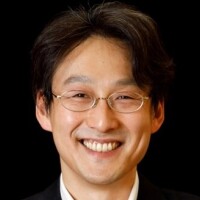
PLEASE NOTE:
- This department seminar will be in person only and will not be recorded. Registration is not required; you can simply turn up.
- Refreshments will be served immediately after this seminar in RSM 3.24
Title:
Towards Human Systems Biology of Sleep/Wake Cycles: Phosphorylation Hypothesis of Sleep
Abstract:
The field of human biology faces three major technological challenges. Firstly, the causation problem is difficult to address in humans compared to model animals. Secondly, the complexity problem arises due to the lack of a comprehensive cell atlas for the human body, despite its cellular composition. Lastly, the heterogeneity problem arises from significant variations in both genetic and environmental factors among individuals. To tackle these challenges, we have developed innovative approaches. These include 1) mammalian next-generation genetics, such as Triple CRISPR for knockout (KO) mice and ES mice for knock-in (KI) mice, which enables causation studies without traditional breeding methods; 2) whole-body/brain cell profiling techniques, such as CUBIC, to unravel the complexity of cellular composition; and 3) accurate and user-friendly technologies for measuring sleep and awake states, exemplified by ACCEL, to facilitate the monitoring of fundamental brain states in real-world settings and thus address heterogeneity in human.
By integrating these three technologies, we have made significant progress in addressing two major scientific challenges in sleep research: 1) understanding sleep regulation (sleep mechanisms) and 2) determining the role of sleep (sleep functions). With regard to sleep mechanisms, we have recently proposed the phosphorylation hypothesis of sleep, which emphasizes the role of the sleep-promoting kinase CaMKIIα/CaMKIIβ (Tatsuki et al., 2016; Tone et al., 2022; Ode et al., 2020) and the involvement of calcium signaling pathways (Tatsuki et al., 2016). According to this novel perspective, the dynamics of calcium, representing neural activity during wakefulness, can be integrated and converted into the auto-phosphorylation status of CaMKIIα/CaMKIIβ, which induces and sustains sleep (Tone et al., 2022). We also identified wake-promoting kinases and sleep-promoting phosphatase in mammalian sleep. Concerning sleep functions, we conducted computational studies to examine synaptic efficacy dynamics during sleep and wakefulness. Our findings led to the formulation of the Wake-Inhibition-Sleep-Enhancement (WISE) mechanism, suggesting that wakefulness inhibits synaptic efficacy, while sleep enhances it in certain conditions.
During this talk, we will also present our discoveries regarding the identification of muscarinic acetylcholine receptors (Chrm1 and Chrm3) as essential genes of REM sleep. Furthermore, we will discuss new insights into psychiatric disorders, neurodevelopmental disorders, and neurodegenerative disorders derived from the phosphorylation hypothesis of sleep.
Biography:
 Hiroki R. Ueda is a professor at the Graduate School of Medicine at the University of Tokyo. He obtained his Bachelor’s degree from the Faculty of Medicine at the University of Tokyo in 2000, and in 2004, he completed his Ph.D. at the same institution. In 2003, he was appointed as a team leader at RIKEN. Subsequently, in 2013, he assumed the position of full professor at the Graduate School of Medicine, The University of Tokyo. In 2016, Ueda made a groundbreaking discovery by identifying the sleep-promoting kinases, CaMKIIalpha and CaMKIIbeta. This finding led him to propose the phosphorylation hypothesis of sleep, which suggests that the phosphorylation-dependent regulation of the Ca2+-dependent hyperpolarization pathway underlies the regulation of sleep homeostasis in mammals. Furthermore, in 2018, he made another significant breakthrough by identifying the first essential genes of REM sleep, specifically muscarinic receptors M1 and M3.
Hiroki R. Ueda is a professor at the Graduate School of Medicine at the University of Tokyo. He obtained his Bachelor’s degree from the Faculty of Medicine at the University of Tokyo in 2000, and in 2004, he completed his Ph.D. at the same institution. In 2003, he was appointed as a team leader at RIKEN. Subsequently, in 2013, he assumed the position of full professor at the Graduate School of Medicine, The University of Tokyo. In 2016, Ueda made a groundbreaking discovery by identifying the sleep-promoting kinases, CaMKIIalpha and CaMKIIbeta. This finding led him to propose the phosphorylation hypothesis of sleep, which suggests that the phosphorylation-dependent regulation of the Ca2+-dependent hyperpolarization pathway underlies the regulation of sleep homeostasis in mammals. Furthermore, in 2018, he made another significant breakthrough by identifying the first essential genes of REM sleep, specifically muscarinic receptors M1 and M3.
To further expedite his research endeavours, Ueda has pioneered innovative methods such as whole-brain and whole-body clearing and imaging techniques known as CUBIC. Additionally, he has contributed to the field of genetics by inventing next-generation mammalian genetic tools, including Triple-CRISPR and ES-mice methods. These advancements enable the streamlined production and analysis of knockout (KO) and knock-in (KI) mice without the need for traditional crossing methods.
References:
1.Tatsuki et al. Neuron, 90(1) : 70–85 (2016).
2. Sunagawa et al, Cell Reports, 14(3):662-77 (2016).
3. Susaki et al. Cell, 157(3): 726–39, (2014).
4. Tainaka et al. Cell, 159(6):911-24(2014).
5. Susaki et al. Nature Protocols, 10(11):1709-27(2015).
6. Susaki and Ueda. Cell Chemical Biology, 23(1):137-57 (2016).
7. Tainaka et al. Ann. Rev. of Cell and Devel. Biol. 32: 713-741 (2016).
8. Ode et al. Mol. Cell, 65, 176–190 (2017).
9. Tatsuki et al, Neurosci. Res. 118, 48-55 (2017).
10.Ode et al, Curr. Opin. Neurobiol. 44, 212-221 (2017).
11. Susaki et al, NPJ. Syst. Biol. Appl. 3, 15 (2017).
12. Shinohara et al, Mol. Cell 67, 783-798 (2017).
13. Ukai et al, Nat. Protoc. 12, 2513-2530 (2017).
14. Shi and Ueda.BioEssays 40, 1700105 (2018).
15. Yoshida et al, PNAS 115, E9459-E9468 (2018).
16. Niwa et al, Cell report, 24, 2231-2247. e7 (2018).
17. Ode and Ueda, Front. Psychol. 11, 575328 (2020).
18. Katori et al, PNAS 119, e2116729119 (2022).
19. Ode K.L. et al, iScience 25, 103727 (2022),
20. Tone D. et al, PLOS Biology 2022.



